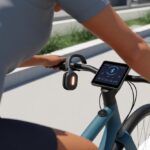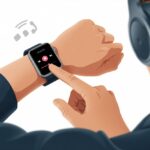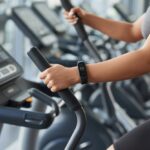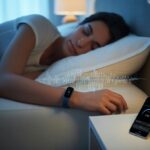Ever wondered if strapping a mini computer to your wrist actually makes you a better cyclist, or are we just looking for another excuse to buy gadgets? Honestly, cycling with a smartwatch feels like having a tiny coach yelling stats at us—minus the yelling, and thankfully, the sweat. Smartwatches let us track rides, map routes, and monitor our health in real time, right from the handlebars or our wrists.
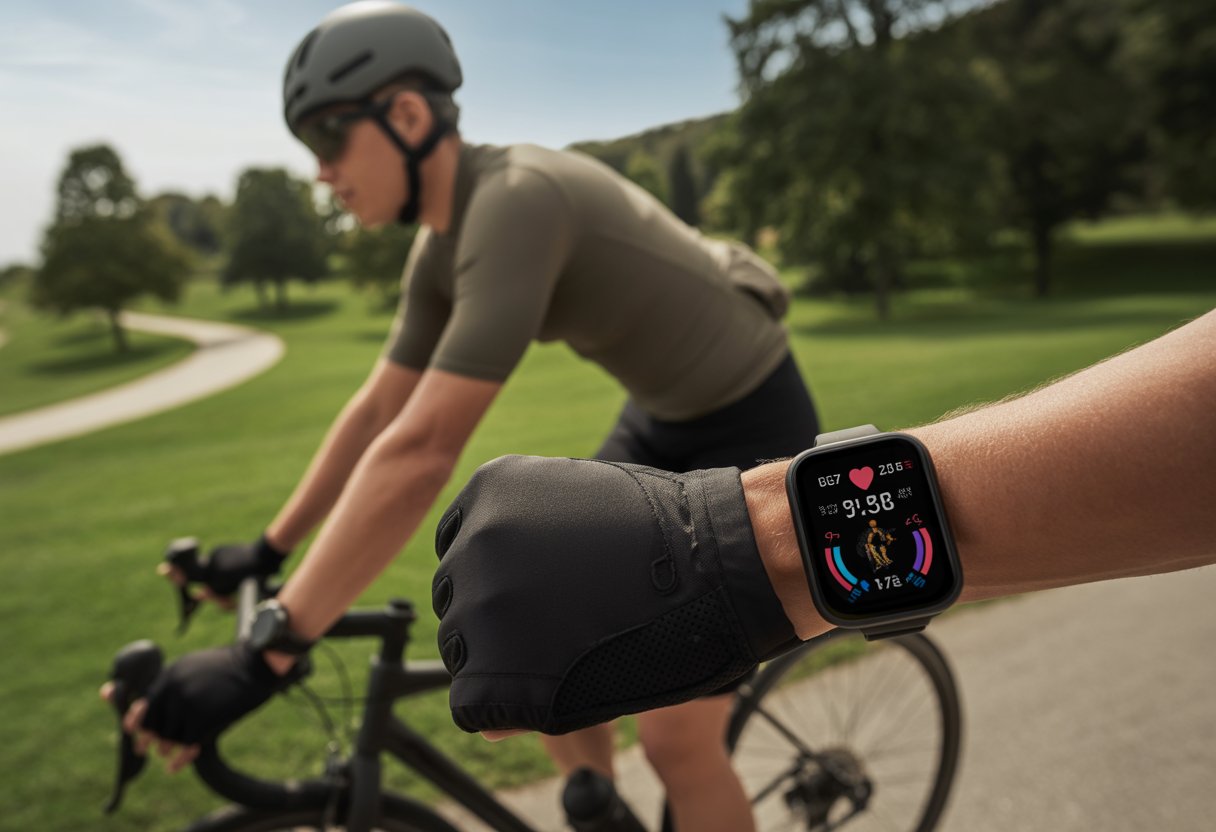
With a smartwatch, we’re not just racing the wind anymore—we’re chasing our last best time, pushing our heart rates a bit higher, and seeing exactly how far we’ve gone (so we know how much cake we’ve earned later). Dedicated cycling modes, GPS tracking, and fitness metrics turn every ride into a mini competition.
Some smartwatches even connect to our other bike gadgets, like power meters—because apparently, our bikes need accessories for their accessories. Ever wanted to know just how much slower you climb hills than your buddy, or how little sleep you got after that midnight snack? A decent smartwatch has your back. If you’re curious which models are best for cycling, many smartwatches now offer cycling-specific features.
Getting Started With Your Smartwatch For Cycling
Before we hop on the bike, let’s make sure the smartwatch is set up for the ride. We need to pair it with our phone, set up cycling profiles, connect those little sensors, and tweak the display to show what matters (like heart rate, not unread emails).
Pairing Your Devices
Pairing our smartwatch with the phone is always step one. Some models like the Garmin Venu or Fitbit Surge want us to download their official app (hello, Garmin Connect). Bluetooth is the hero here.
We just enable Bluetooth on the phone, open the app, and hit “pair new device.” If only everything was as easy as this—like finding matching socks.
Here’s a quick table for common brands:
| Brand | Phone App | Method |
|---|---|---|
| Garmin Venu | Garmin Connect | Bluetooth |
| Garmin Vivoactive | Garmin Connect | Bluetooth |
| Fitbit Surge | Fitbit App | Bluetooth |
Notifications pop up—just approve the pairing. We say yes faster than we say yes to free pizza. Once paired, GPS routes and heart rate readings sync between watch and phone, no extra effort needed.
Setting Up Cycling Profiles
Most smartwatches want us to set up a cycling profile so the device knows we’re serious. On Garmin watches like the Venu 2 or Vivoactive, we scroll through the activity list and pick “Cycling.” We can even make profiles for road rides, gravel, or that “indoor biking” session where the only obstacle is the cat.
A specific cycling profile keeps our data organized and relevant. It also lets us record details like distance, speed, and calories burned. Profiles make stats accurate—and save us from explaining why our “running” pace is suddenly 30 mph.
Connecting Sensors
Sensors make our data even better. Lots of us use wireless sensors like speed or cadence meters, and that trusty HR sensor (heart rate, not heart romance). We head into the sensors or accessories menu on the watch.
Bluetooth or ANT+ usually work, so we just make sure the sensor is on and in range. On Garmin watches, it’s usually “Add Sensor” and wait for the device to pop up. We link it, and heart rate and cadence start flowing in.
This is great for anyone obsessed with performance—or for out-pedaling that friend who never stops bragging about their stats.
Customizing Metrics Display
If the default display shows steps and stairs while we’re cycling, that’s just not helpful (unless we’re carrying our bikes up Everest). So, we change up the metrics on the watch display.
Most smartwatches let us pick what we see: speed, heart rate, GPS, distance, power, and more. With Garmin Venu or Venu 2, we hold a button, pick our cycling profile, and adjust fields as we like. Some watches show multiple data fields at once.
We choose the stats we care about, and suddenly our wrist feels a lot more useful. No more digging through menus or squinting at tiny numbers while dodging potholes. Our smartwatch finally feels like a cycling buddy, not just a digital bracelet. Now if only it could hand us water bottles, right?
Tracking Your Bike Ride Like A Pro
Cycling with a smartwatch feels a bit like having our own assistant—just without the pep talks. We get live stats, route maps, and automatic ride tracking right on our wrists.
Using GPS Features
Let’s talk GPS. It’s the little wizard in our smartwatch that knows exactly where we are (and quietly judges us when we detour for coffee). When we start a ride, we just pick the cycling activity and let GPS do its thing.
Smartwatches from brands like Garmin, Apple, and Samsung track distance, speed, and route. Some models even give us a fun route map after the ride, so we can brag about those extra miles—or those zig-zags when we got lost.
Some watches use GLONASS or Galileo for extra tracking accuracy. GPS eats battery, though. Lowering screen brightness, turning off features we don’t need, and syncing maps ahead of time can help the watch last longer. We might not be riding coast-to-coast, but a good GPS means every block, hill, and shortcut gets counted.
Auto-Detecting Your Rides
We all forget to press start sometimes, usually right before a snack break. Thankfully, many smartwatches have an auto-detect feature that kicks in when they sense we’re cycling.
Garmin and Samsung watches use sensors to spot movement patterns, like pedaling speed and heart rate changes, and start logging the ride in the background. It’s not quite magic, but it’s close.
This feature means we don’t have to stress if we forget to start tracking. If we ride a lot, it saves us from missing data and lets us focus on the ride—not the buttons.
Starting And Stopping The Activity Timer
Even with auto-detect, sometimes we need to start and stop the activity timer ourselves. We tap the cycling activity, hit “Start,” and get going. When we stop, we can pause for coffee or to fix a flat—just tap again to pause.
Here’s a quick checklist for the timer:
- Start: Tap “Cycling,” then “Start.”
- Pause: Tap when stopped at lights (or bakeries).
- Resume: Tap again when we’re rolling.
- End: Finish and save at the end so stats go to our fitness apps, like Garmin Connect.
If we forget a step, we miss out on proof of that heroic uphill effort. So yeah, use that big start/stop button.
Mapping And Route Planning
We don’t have to get lost—unless we want to, just for fun. Many smartwatches offer mapping and route planning right on the device or with companion apps.
Garmin smartwatches link with Garmin Connect so we can create, download, and follow cycling routes. With turn-by-turn guidance, the watch buzzes if we take a wrong turn—like a tiny tour guide on our wrist.
We plan loops, out-and-back rides, or totally new adventures. Some watches show maps on the screen, but if it’s too tiny, we can pre-load a route from our phone.
Mapping features help us explore new paths and track every detail. If we ever want to brag, “Look at this epic loop I conquered,” we’ll have the map to prove it.
Monitoring Health And Performance Metrics
With a smartwatch strapped on, we finally get to show off our cycling stats—no spreadsheets or math degrees required. We see what’s happening in our bodies and get real numbers for speed, effort, and calorie burn.
Tracking Heart Rate
A smartwatch’s heart rate monitor gives us a peek into our own engine room. As we ride, the wrist sensor checks our heart’s rhythm in real time. It warns us if we’re pushing too hard—or if we need to stop pretending our casual ride is the Tour de France.
Staying in the right heart rate zone matters. We see if we’re burning fat, working on endurance, or going all-out. Some watches let us set custom heart rate zones, so we can train smarter instead of just getting sweatier.
If our watch uses an optical HR sensor, it checks our pulse through our skin. Chest straps are even more accurate, but let’s be honest, they’re not the coolest look. For most of us, a wrist-based HR monitor does the job. We can always check out extra tips on using a Garmin smartwatch for health tracking.
Measuring VO2 Max
Ever wish you knew how powerful your lungs really are? VO2 Max tells us just that. It measures how much oxygen our body uses during hard exercise.
The higher our VO2 Max, the more we can brag about our aerobic fitness—or at least feel good as we climb hills without turning into a wheezing bagpipe. Our smartwatch calculates this number using heart rate data and speed, then mixes in age, weight, and gender.
We’ll probably notice our VO2 Max score going up as we train. If it drops, maybe it’s time for a rest—or to skip the triple cheeseburger.
VO2 Max is handy for tracking progress over weeks or months. We don’t need a science lab—just a steady ride and a smartwatch that does the math. Honestly, who knew breathing could be this interesting?
Calculating Calories Burned
Let’s be honest: If we’re putting in the miles, we want to know how many post-ride snacks we’ve earned.
Smartwatches estimate calories burned by combining heart rate, cycling speed, age, and weight. Sure, it’s not perfect, but it definitely beats just guessing (or blaming the donuts).
Here’s a quick breakdown:
| Heart Rate | More effort = More calories |
|---|---|
| Speed | Going faster = Burning more |
| Weight | Heavier riders burn more |
Some watches even tweak their math if we tell them we’re climbing hills or battling a headwind.
We get better calorie estimates when we feed them more data. For serious tracking, checking out key cycling metrics on smartwatches helps us stay on top of fueling and fitness.
So, that post-ride cookie? We’ve probably earned it.
Upgrading Your Cycling With Smartwatch Accessories
Sometimes, pedal power alone just doesn’t cut it.
Time to bring in a few gadgets to track everything from leg speed to wattage. Most of these accessories connect easily to modern smartwatches—assuming we don’t get lost in the settings.
Connecting A Cadence Sensor
Honestly, we don’t always know how fast our feet are spinning unless our shoelaces start blurring.
A cadence sensor solves that by counting pedal revolutions per minute (RPM).
Pairing a cadence sensor to our smartwatch only takes a few minutes. Most wireless sensors use Bluetooth or ANT+.
We jump into the watch’s settings, start searching for new sensors, and spin the pedals. Suddenly, the numbers show up on the screen.
Tracking cadence helps us ride smarter, not just harder.
We can even flex our cadence charts on group rides. Want proof? There’s a fun discussion on smart watches and cycling sensors.
Integrating Power Meters
Power meters might sound like superhero gadgets, but really, they just measure how much force we push through the pedals.
This number—watts—gives us a real idea of our cycling effort.
Connecting a cycling power meter to our smartwatch works almost like adding a cadence sensor. It’s all Bluetooth or ANT+ pairing.
Once they’re linked, every pedal stroke gets tracked.
Power meters let us train with science instead of guesswork.
We can target certain watt zones, spot tired legs, and see progress. Plus, it’s always fun to say, “I hit a new personal best in watts!” instead of just “I felt good today.”
Pairing With A Smart Trainer
When the weather tells us to stay inside, a smart trainer becomes our new best friend.
These trainers connect to our watch and simulate everything from flat roads to mountain climbs—without ever leaving the garage.
We pair our smartwatch using Bluetooth. The watch reads the resistance, tracks our virtual routes, and logs our stats.
Many smart trainers also let us compete against friends (or rivals) right from the living room.
This setup keeps us riding when outdoor rides aren’t an option.
There’s something oddly satisfying about crushing a big hill while sitting two feet from the fridge. If you want to see how smartwatches can replace bike computers, check out this demo with the Amazfit GTR 4.
Staying Connected On The Go
Cycling with a smartwatch means we can keep an eye on important messages, track our rides, and brag about our achievements—no phone juggling required.
Smartwatches help us stay social, in sync, and on course, even if we can’t ride in a straight line.
Viewing Notifications
Getting a text about dinner plans mid-ride is way easier when it pops up on our wrist.
Most smartwatches send real-time notifications for calls, texts, and app alerts.
We can glance down, decide if it’s urgent, and keep rolling or pull over if we have to.
Apple Watch, Garmin, and other popular brands let us customize what shows up.
We can mute social drama but still get work updates (if we must). With gesture controls, a quick flick of the wrist reveals the latest alert.
No more digging through pockets just to see who liked our bike selfie.
On group rides, notifications make it easier to spot last-minute route changes or cheer for friends’ KOMs.
And yes, that “hydration reminder” is actually useful—even if it feels a little bossy coming from a watch.
Syncing With Strava
If it’s not on Strava, did the ride even happen?
Most smartwatches record cycling workouts and automatically upload them to Strava.
We get kudos, chase segment PRs, and obsess over stats—without ever plugging in a cable.
Usually, we just link our smartwatch brand’s app to Strava. After each ride, workouts sync in the background.
Instant bragging rights, route maps, and even reminders that someone stole our KOM.
This connection also helps us analyze heart rate, cadence, and pace over time.
It’s easier to organize and review rides, with no double entries or missing miles.
Plus, it’s always good to let our friends know we survived that monster hill.
Using Garmin Connect
Team Garmin folks use Garmin Connect as home base.
The app syncs every ride from our watch and turns raw data into easy-to-read charts, graphs, and colorful maps.
We can track training load, recovery, and even see how much pizza we’ve “earned” after a ride.
Garmin Connect makes sharing results with friends or coaches simple.
We can join challenges, compare stats, and set targets for new adventures.
The best part? It syncs with Strava, so no duplicate data or lost rides.
Between adaptive workout suggestions and post-ride insights, it sometimes feels like we hired a cycling coach.
If only our watch could remind us to use sunscreen, right?
Enhancing Your Cycling Experience
Smartwatches can make our rides smarter, not just longer.
If we want to enjoy every pedal stroke, we should focus on battery life, picking the right watch, and making the most of cycling apps.
Optimizing Battery Life
Nobody wants a dead smartwatch halfway through a 40-mile ride.
Long battery life is our secret weapon.
Models like the Garmin Venu, Garmin Venu 2, or even the trusty Fitbit Surge last through several rides before begging for a charger.
Turning off features like Wi-Fi or music streaming keeps our battery from draining too fast.
Lowering screen brightness and using GPS only when needed also helps.
Quick tip: Enable battery saver mode (if your watch has one) before heading out.
If we plan to push our limits, charging our device before leaving matters as much as filling our water bottles.
Some smartwatches offer ultra battery-saving settings for long rides, but honestly—tracking every heartbeat isn’t worth it if the last mile stays a mystery!
Choosing The Right Smartwatch
Picking the right smartwatch is a bit like choosing a bike saddle—comfort and fit matter.
Devices like Garmin Vivoactive, Garmin Venu, and even the Garmin Edge (though it’s more of a bike computer) all work well for cycling.
We want accurate GPS, strong waterproofing, and enough battery to survive back-to-back rides.
The watch should feel light, not like a brick on our wrist.
Display visibility matters too—we need to read stats at a glance, even mid-sweat.
Compatibility with cycling sensors and third-party apps is a bonus.
If we’re team Fitbit, the Surge is a reliable pick, but Garmin models usually offer more cycling features and detailed insights for cyclists.
Using Cycling-Specific Apps
Cycling apps are where our smartwatch really shines.
Apps like Strava, Garmin Connect, and specialized cycling tools turn our data into something actually useful (and, let’s admit it, kind of addicting).
We can track speed, distance, heart rate, cadence, and even get alerts for incoming storms—no one likes a helmet full of rain.
Easy syncing means our stats pop up on our phones, no spreadsheets needed.
Some watches, like the Garmin Venu 2 or Edge, support custom routes or fitness challenges.
Not just great for solo rides, but perfect for friendly competition—because nothing says “team spirit” like beating our neighbor’s best time up the hill.
Comparing Top Smartwatches For Cyclists
When we’re cycling, we want a smartwatch that does more than just count our steps or nag us about standing up.
We need gear that tracks our rides, supports fitness features, and doesn’t die mid-adventure.
Garmin Edge Series
The Garmin Edge series isn’t even a watch—it’s a cycling computer—but it deserves a spot because so many riders slap it on their handlebars like a trophy.
It offers excellent GPS navigation, mapping, and pairs with sensors for speed, heart rate, and power meters. That’s real cycling cred.
We can upload routes and follow turn-by-turn directions, so we don’t get hopelessly lost—or at least, don’t look as lost.
The big, bright screen stays readable even when we’re drenched in sweat.
Battery life is impressive. Some Garmin Edge models run up to 24 hours on a single charge, which, honestly, outlasts our legs most days.
If you love data, charts, and graphs, this is a top pick among cycling watches and computers.
Garmin Venu Lineup
The Garmin Venu lineup, including the Venu 2, is the stylish cousin in the Garmin family.
Unlike the Edge, this one actually looks like a watch.
It offers a vivid AMOLED display, built-in GPS, and a dedicated cycling mode—great for both road and mountain biking.
Our favorite part? It tracks more than just cycling.
Heart rate, stress, sleep, and “Body Battery” levels make us feel like we’re being watched by a very polite robot.
Durability is solid, so if we’re clumsy and scrape it against a tree, it’ll probably shrug it off.
Garmin Venu watches connect to our smartphones for notifications and music controls.
That’s handy if we want to change the playlist without risking a crash.
For all-in-one fitness tracking that fits in at both the gym and the coffee shop, the Garmin Venu lineup is a smart bet.
Fitbit Surge Strengths
The Fitbit Surge has been around for a while, but it still pops up in conversations about cycling watches.
It covers the basics: built-in GPS, heart rate tracking, multi-sport modes, and automatic sleep monitoring.
Some features feel a bit old-school, but honestly, we like the comfortable band and the simple interface.
You won’t need to be a tech genius to figure this thing out.
The Surge’s battery lasts about 7 days—sometimes even longer if we forget to turn on the GPS (which, let’s be real, happens more than we’d like to admit).
Fitbit’s app makes it pretty easy to check our rides, pace, and calories.
It might not have every single bell and whistle, but for everyday cycling and general fitness, the Fitbit Surge honestly holds its own.
- Why is my fitness tracker not pairing with Apple Health? Troubleshooting for Technologically Cursed Mortals - December 22, 2025
- Why is my fitness tracker not updating firmware? Tech Tantrums and Update Woes Explained - December 21, 2025
- Why is the Sound Quality on My Bluetooth Headphones Poor? It’s Not Just Bad Music Taste! - December 21, 2025

